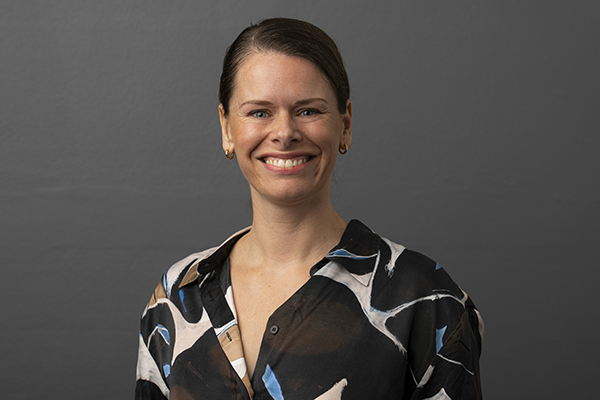Luise Ørsted Brandt
Research leader

Project title
Imported fur in Viking Age Denmark and its importance as visual marker
What is your project about?
My project explores the use of fur in Viking Age Denmark. While written sources describe Viking trade with luxury furs along Russian rivers, less is known about whether high-ranking Vikings in Denmark used imported fur as a status symbol. In a time of power struggles for the Danish throne, visually displaying wealth was crucial, and fur could have been a significant symbol. This project systematically examines Viking Age graves for fur, employing new methods for species and provenance identification to discuss whether fur was also used as a status symbol in Denmark.
How did you become interested in your particular field of research?
My fascination with archaeology began, when I was around seven years old during a captivating tour of the National Museum's of Denmarks Egyptian collection. The experience shaped my interests, leading to family visits to archaeological sites during holidays and borrowing books on pyramids from the library. Although initially drawn to biology in high school, I eventually pursued Prehistoric Archaeology at the University of Copenhagen. It is curious, that I ended up bridging both interests.
What are the scientific challenges and perspectives in your project?
To acquire new knowledge about Viking Age fur, it is crucial to develop entirely new methods for identification of species and provenance of this fascinating yet often poorly preserved material. The project therefore involves venturing into unexplored paths within protein and isotope research. Additionally, delving into the National Museum of Denmark´s collection of Viking Age graves is necessary to determine how many of these graves contain fur, as this information has not been systematically recorded. The project thus provides a fresh overview of previously overlooked material, contributing new references and methods to the field of archaeological science.
What is your estimate of the impact, which your project may have to society in the long term?
My research delves into core aspects of the Viking Age, such as trade, self-presentation, status, and consumption, which are relevant contemporary themes that history can contextualise. By continuously researching and challenging our understanding of prehistory, we can avoid its misappropriation for political purposes.
Which impact do you expect the Sapere Aude programme will have on your career as a researcher?
Receiving the Sapere Aude: DFF Starting Grant is a significant acknowledgment of my research. It brings me joy and pride, and allows me to focus on research for three years while developing as a research leader. Establishing a collaborative research group motivates me, and allows me to achieve more and contribute to international research of the highest quality.
Background and personal life
I live in Østerbro, Copenhagen, with my partner and our 1.5-year-old daughter. Since becoming parents, our time for personal interests has significantly diminished, but experiencing the world anew with our daughter is incredibly rewarding. Taking the time to observe simple things like a squirrel acts as a counterbalance to my hectic work life. I have a passion for reading books, both classics and modern literature, and fortunately, it seems our daughter shares this love. Nature serves as a refuge for me, especially when searching for fossils on the beach near our family's summerhouse on Samsø. Additionally, I prioritise playing tennis, running, and spending time with friends and family.
View all research leaders here
Research institution
University of Copenhagen
Research field
Archaeology
City of your current residence
Copenhagen
High school
Sankt Annæ High School
